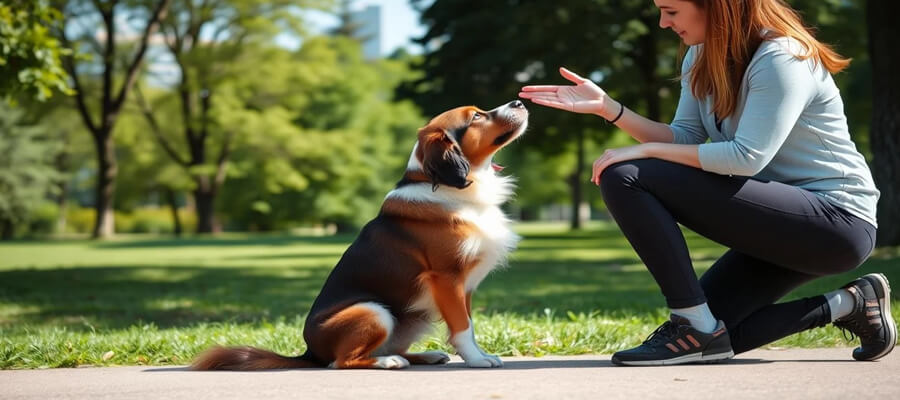
How to Train Your Dog to Greet Guests Calmly
Train Your Dog to Greet Guests Calmly
Introduction
Having a dog that can greet guests calmly is essential for maintaining a peaceful home environment. Whether your dog gets overly excited, jumps up, or barks at visitors, training them to remain calm can make a significant difference. In this guide, you will learn effective techniques to train your dog to greet guests with poise and respect, ensuring that everyone feels comfortable during visits.
1. Prepare Your Dog for Training
Before starting the training process, it's crucial to prepare your dog and your environment for success.
A. Create a Calm Environment
Essentials for Your Newly Adopted Pet
Welcoming a shelter pet into your life is a beautiful journey. Here are some handpicked items to help your new friend feel safe, loved, and right at home:
- Description: Choose a quiet area in your home where training can take place without distractions.
- Tip: Remove toys and other stimuli that might excite your dog during training sessions.
B. Gather Training Supplies
- Description: Have high-value treats, a clicker (if using clicker training), and a leash handy for guidance.
- Tip: Choose treats that your dog loves and that are easy to consume quickly.
2. Teach Basic Commands
Establishing basic commands is a foundational step in helping your dog learn how to behave around guests.
A. Focus on Sit and Stay
- Description: Begin by teaching your dog the commands "sit" and "stay." These commands will help them remain calm and stationary when guests arrive.
- Tip: Practice these commands regularly, using treats to reinforce positive behavior.
B. Practice the “Go to Place” Command
- Description: Teach your dog a specific spot where they should go when guests arrive, such as a mat or bed. This gives them a clear expectation of what to do.
- Tip: Use treats to encourage your dog to go to their designated place and reward them for staying there.
3. Simulate Guest Arrivals
Practicing with a friend or family member can help your dog get accustomed to the presence of guests.
A. Controlled Introductions
- Description: Have a friend act as a guest and approach your home as if they are visiting.
- Tip: Use a leash to control your dog’s excitement and practice commands as your friend enters.
B. Reinforce Calm Behavior
- Description: As your friend approaches, ask your dog to sit or go to their place. Reward them for staying calm and not reacting.
- Tip: If your dog starts to get excited, calmly redirect them back to their command without scolding.
4. Gradually Increase Difficulty
Once your dog has mastered calm behavior with controlled introductions, it's time to increase the difficulty.
A. Vary Guest Behavior
- Description: Have your friend act differently during subsequent practice sessions (e.g., jumping, speaking loudly) to simulate various guest behaviors.
- Tip: Reinforce calm behavior regardless of how your guest acts, helping your dog learn to stay composed.
B. Add Distractions
- Description: Incorporate distractions, such as doorbells or knocks, while practicing commands.
- Tip: Reward your dog for remaining calm in the face of these distractions, reinforcing their training.
5. Implement Positive Reinforcement
Positive reinforcement is key to successful training and encourages desired behaviors.
A. Use High-Value Rewards
- Description: Offer treats, praise, and affection when your dog demonstrates calm behavior around guests.
- Tip: Ensure the rewards are immediate and consistent to help your dog make the connection between their behavior and the reward.
B. Create a Positive Association with Guests
- Description: When guests arrive, have them offer treats to your dog once they are calm. This helps your dog associate visitors with positive experiences.
- Tip: Ensure guests understand to ignore your dog until they are calm, avoiding any excitement that might lead to jumping or barking.
6. Consistency is Key
Consistency in training and rules will help your dog understand what is expected of them.
A. Set House Rules for Guests
- Description: Establish rules for how guests should interact with your dog during their visits.
- Tip: Inform guests to avoid overly enthusiastic greetings, which can reinforce your dog’s excitement.
B. Regular Training Sessions
- Description: Practice the training commands regularly, even when guests are not present, to reinforce your dog’s understanding.
- Tip: Short daily training sessions can be more effective than longer, infrequent ones.
7. Monitor Progress and Adjust Training
Observe your dog’s behavior and be prepared to make adjustments as needed.
A. Track Improvements
- Description: Keep a log of your dog’s progress to identify areas where they excel and where they may need more practice.
- Tip: Celebrate small victories, such as your dog sitting calmly for longer periods or responding more quickly to commands.
B. Be Patient and Flexible
- Description: Remember that every dog learns at their own pace. Be patient and adjust your training methods based on your dog's responses.
- Tip: If your dog struggles with certain aspects of training, break it down into smaller, more manageable steps.
Conclusion
Training your dog to greet guests calmly is a process that requires time, patience, and consistency. By preparing your dog, teaching them basic commands, simulating guest arrivals, and implementing positive reinforcement, you can help your furry friend learn to be calm and respectful around visitors. With dedication and practice, you’ll create a welcoming environment for both your guests and your dog, making visits enjoyable for everyone involved.
Affiliate Products
We may earn a small commission when you shop through our links — it helps us keep sharing love and care for every dog out there, at no extra cost to you.
Up to 75% Discount

Dog Collar with Health Monitoring
BUY NOW »
Up to 55% Discount

Luxury Faux Furhuge Napping Bed
BUY NOW »

